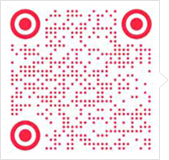
http://gansu.hteacher.net 2024-08-06 16:39 甘肃教师招聘 [您的教师考试网]
Teaching Objectives
1. Knowledge Objectives
All students could understand the meaning of the passage properly.
Students could listen, speak, read and write the new words: already, factory, Japan, believe, disagree, shape, even, fall down, look for, etc.
2. Ability Objective:
Most students could get the main information about the teaching material by predicting, skimming, scanning and careful reading.
3. Emotional Objectives
Students are willing to talk about the future life and make good use of their imagination and creativity to image a future life with a robot.
Key Points
1. Cultivate students’ reading skills of predicting, skimming and scanning.
2. Grasp the detailed information of the reading material and be able to summarize the main idea.
Difficult Point
The application of reading skills like predicting, skimming, scanning and careful reading, etc is the teaching difficult point.
Teaching Procedures
Step 1. Lead-in
Show students pictures of robots of different sizes and functions, and invite students to have a free talk about their ideas on robots.
Step 2. Pre-reading
The teacher will guide students to look at the title and the picture of the text to cultivate their predicting ability. Some students will be invited to talk about their predictions on the text.
Intention: To catch students’ attention and enable them to learn the new knowledge in a relaxing atmosphere.
Step 3. While-reading
Skimming
Students need to read the text fast to check their predictions. Then students need to finish the task in 2b; matching each paragraph with the question it discusses.
Paragraph 1 Will robots think like humans in the future?
Paragraph 2 What will robots be like in the future?
Paragraph 3 What can robots do today?
Paragraph 4 What are robots like in movies?
Scanning
The teacher guides students to read the passage again and try to finish the following tasks.
1. Students complete the sentences about what robots can do now.
(1) Robots can build ______ in factories.
(2) They can do ______ jobs many times and never get bored.
(3) Some can ______ and ______.
(4) Some can help ______ people under ______.
2. Students should fill in the following form and check the answers together.
| What can robots do now? | What will robots be able to do in the future? |
推荐阅读:
责任编辑:欣欣
公众号

视频号

小红书

小程序

APP

京ICP备16044424号-2京公网安备 11010802023064号 Copyright © 2001-2024 hteacher.net 北京中师华图文化发展有限公司 版权所有